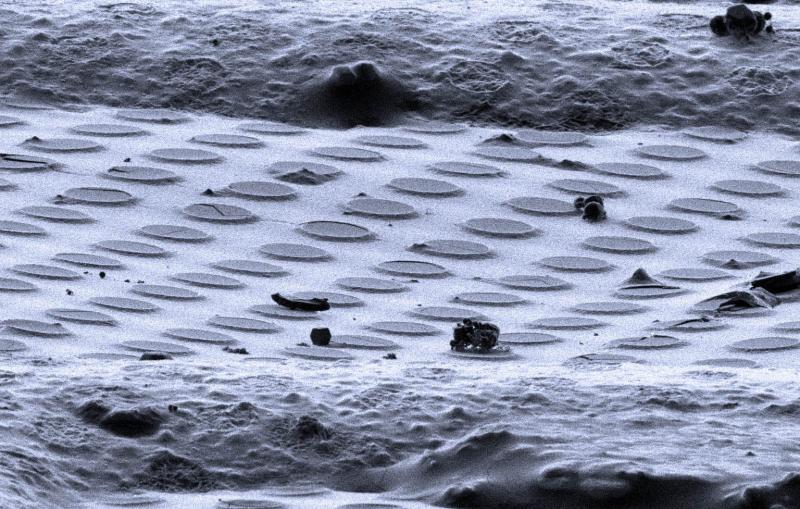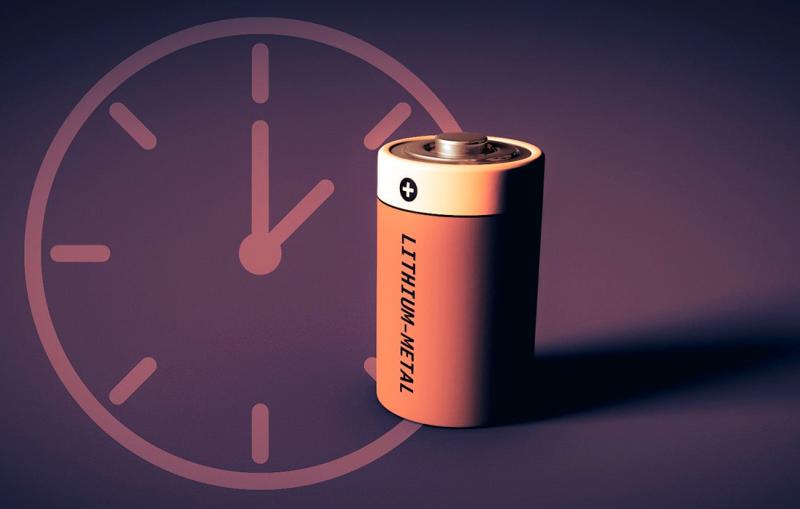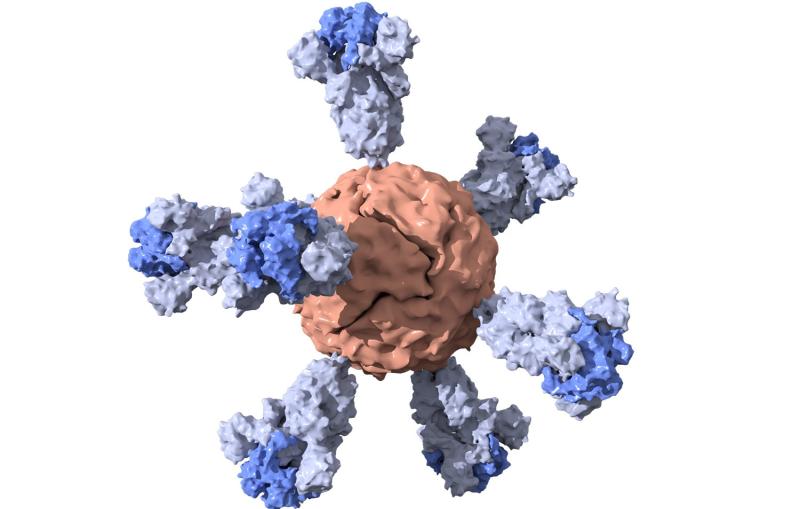Photograph
A battery's liquid electrolyte clings to small holes in a cryo-EM sample holder. The electrolyte will be fast-frozen into a...



Cryo-EM allows scientists to make detailed 3D images of DNA, RNA, proteins, viruses, cells and the tiny molecular machines within the cell, revealing how they change shape and interact in complex ways while carrying out life’s functions.
Related links:
Joint institutes and centers
Cryo-EM fact sheet (pdf)
Stanford-SLAC Cryo-Electron Microscopy website


